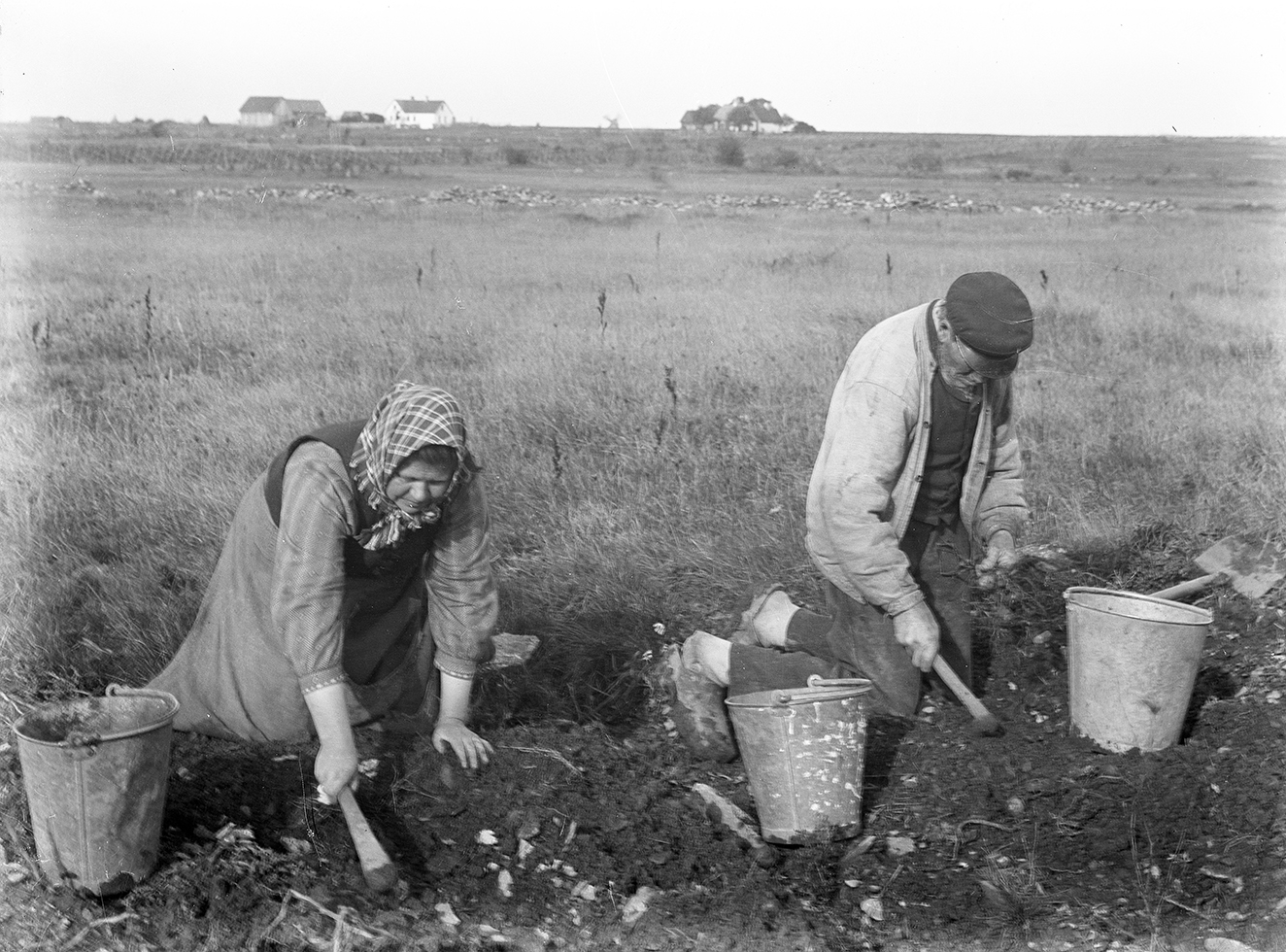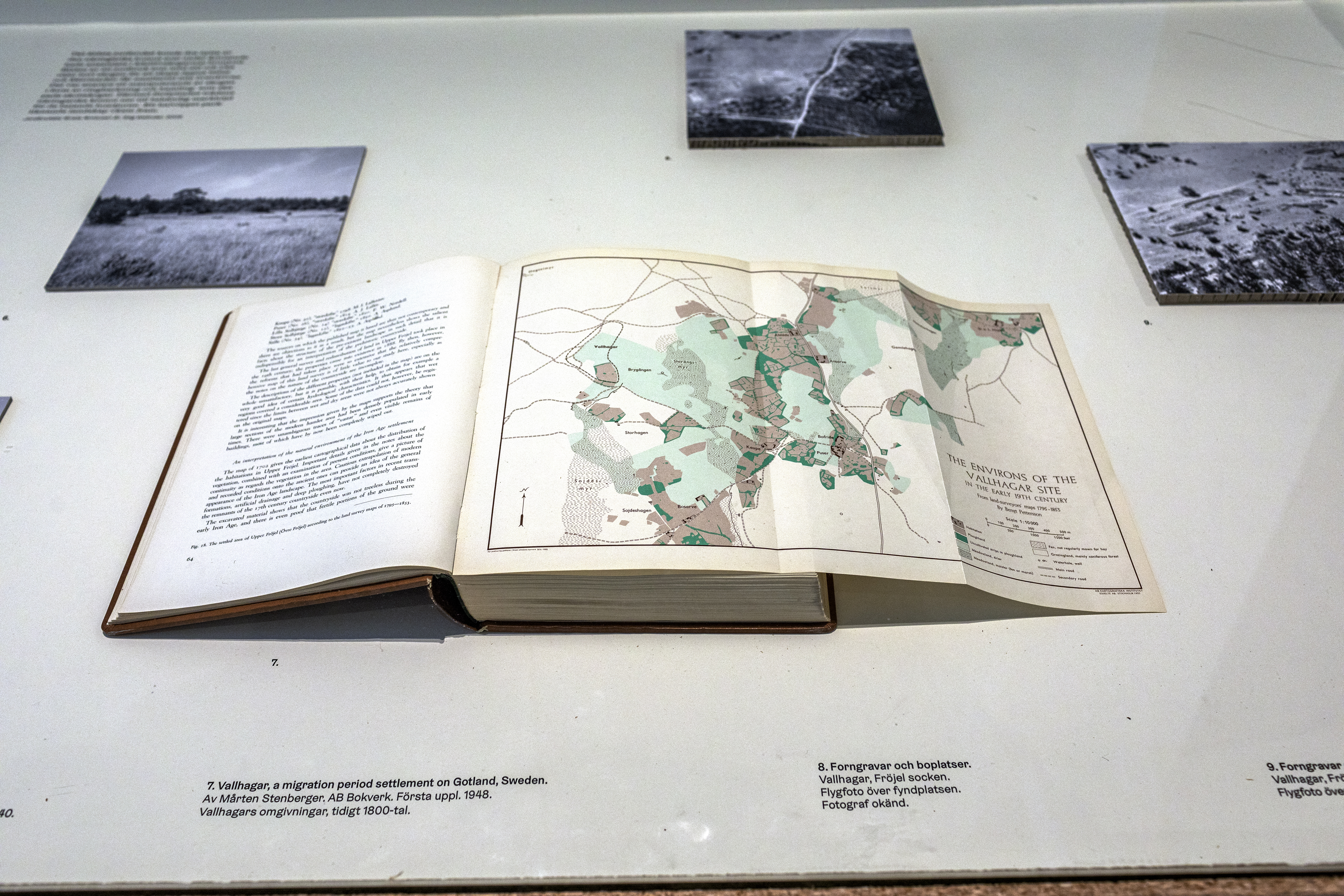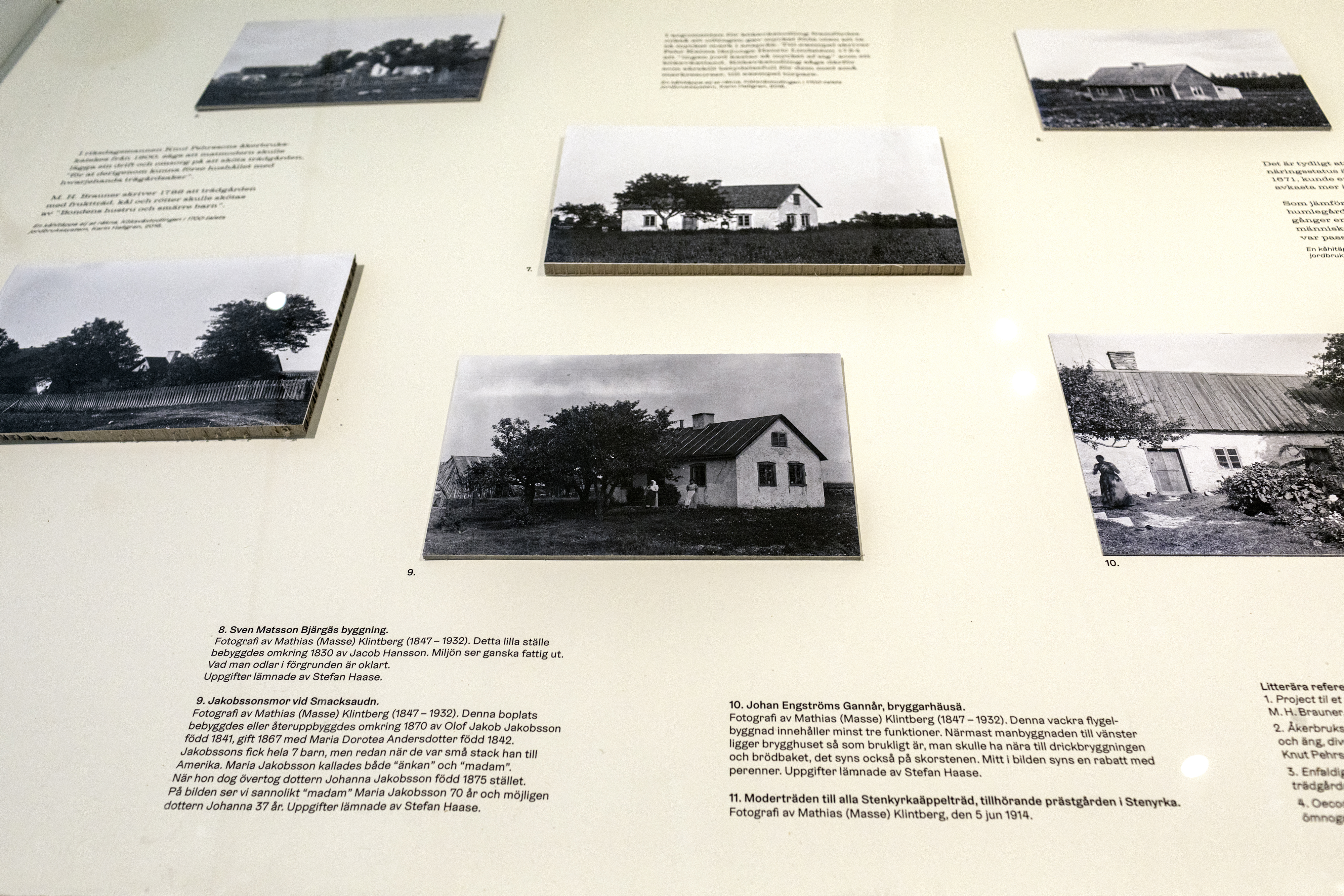Peace With the Earth
Re-search, cultivation and exhibition coordinated by the Baltic Art Center and the Museum of Gotland, with support from the Peoples’ Art Promotion and the Swedish Arts Council. 2017 - 2019.




























About the research process.
By Åsa Sonjasdotter.
The title for the concluding exhibition of this research process, refers to a pamphlet written in 1940 by the farmer and member of the Swedish parliament Elisabeth Tamm (1880-1958) and the author and member of the Swedish Academy Elin Wägner (1882-1949). The call was based on “…a long experience of both new and old farming methods and their effect on the Earth, the animals and the people.” Their conclusion was as profound as it was challenging: “We have to make peace with the Earth, not on the Earth.” It will not be possible to resolve issues of peace, health and education unless people are willing to revaluate their relationship to the Earth. Tamm and Wägners proposal for realistic and sustainable solutions for how the humans can live in a co-nurturing relation with the Earth has been a starting point for the research, carried out in response to their call.
Throughout the research process I have traced overlooked details in history that can help bring nuances to images and narratives of human and more-than-human life. Cultural narratives permeate and shape the structures and functions of society as much as the other way around. By shifting focus from an anthropocentric to a multispecies perspective, overlooked dimensions and stories might appear. The residency on Gotland made possible a thorough enquiry of the nurturing environments that specific plants have provided for humans. Our dependence on these plants has made them central as cultural carriers throughout time and space. An example: the earliest traces of cultivation found on Gotland, dating 4000-3000 BC, are remains of wheat grains that were domesticated in the Middle East about 12000-10000 years ago. Wheat is still one of the more important crops cultivated on Gotland.
As a way to share and circulate the result of the research, the studied crops will be made available for distribution and further cultivation in gardens and plots. With the great help from knowledgeable experts we have been able to propagate seeds, grains and tubers from three cultivars that are unique to Gotland. The Gutekorn association is growing a field of pre-historic emmer wheat at the Bunge Museum. After harvest in September, ears and grains will be available in portions suitable for small-scale cultivation in gardens and plots. Helene Wahlström and Stefan Haase have for more than 40 years selected robust lines of potato varieties, which were introduced to Gotland at the time of industrialization some hundred years ago. They have generously shared tubers of the varieties Käiar, Luntmann, Polackar, Amaila, Rosar and Amrikan, which now are being cultivated at the Bunge Museum. Seeds of the Bunge Turnip, a new variety bred by Åke Broberg in memory of a beloved, however extinct local turnip variety, will be available at the museum around mid-July this year (2019). By propagating and spreading the material to interested gardeners the plants and their stories can stay alive also in the future, or in a time that the historian Donna Haraway calls “‘the thick, fibrous, and lumpy “now”, which is ancient and not’.
THE ART OF HERITAGE – AN ARTISTIC RESEARCH RESIDENCY AT THE GOTLAND MUSEUM is a three-year collaboration between Baltic Art Center, the Museum of Gotland and the People’s Movement for Art Promotion, carried out with support from the Swedish Arts Council’s Regional Development funding. The artistic research residency will receive Swedish and international artists with a keen interest in heritage, historic cultural environments and historiography to explore, research and visualize heritage anew from an artistic point of view.
SPECIAL THANKS TO Birgitta Zerpe, Antiquarian, Museum of Gotland, Sara Eliaesson, curator of the Natural History Collection, Museum of Gotland, Annelie Adolfsson, the Bunge Museum, Helene Wahlström & Stefan Haase, Åke Broberg, Curt Niklasson and Frans Bronzén from the Gutekorn association.
Script for how to regenerate cabbages, potatoes, and grains. ->